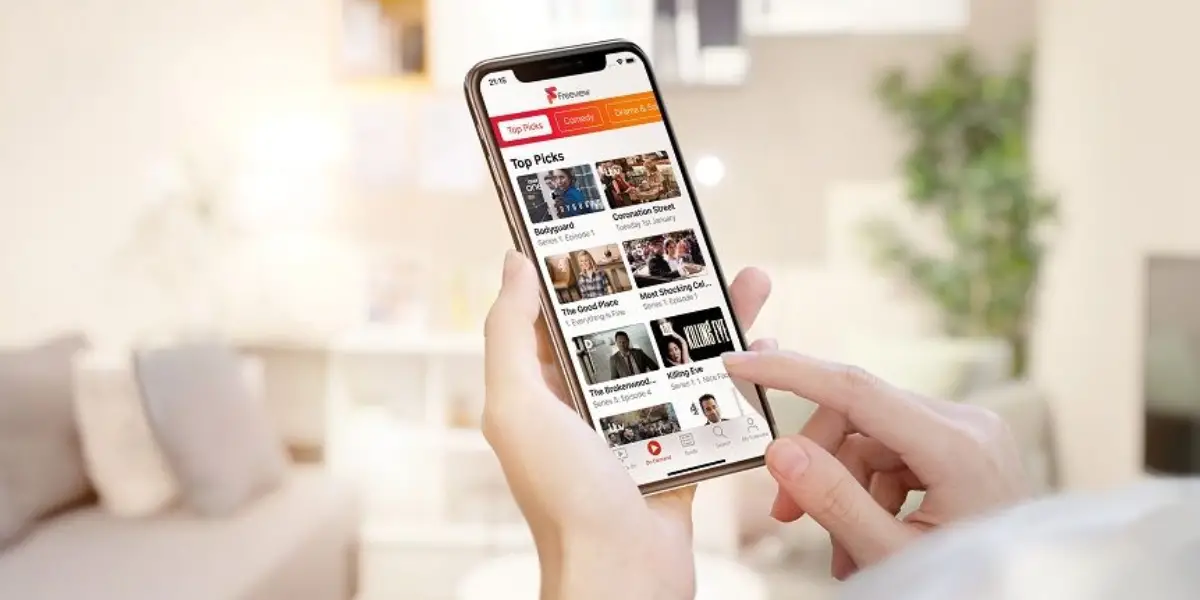Freeview has been a staple of the UK television market for more than 15 years now, but the fact that it is still one of the fastest growing TV platforms in the UK does not mean it is resting on its laurels.
We’ve spent the past few months working on the platform’s new mobile app with integrated live and on-demand content.
Feature-packed and ready to entertain
After months of hard work, the iOS version of the application launched to the world on 22 January, delivering the best of the Freeview experience to mobile users across the UK. In just three taps, users can enjoy live content from BBC, ITV, Channel 4, and on demand content from BBC iPlayer, ITV Hub, All 4, My5 and UKTV Play. In typical Freeview fashion, this is all available to viewers for free.
The app has been built to provide the best possible Freeview experience on the go, with a range of features helping users navigate the vast collection of content available.
On top of the traditional ‘What’s On’ programme guide and 15-day schedule, users have access to a rapid ‘Search’ function to find exactly what they’re looking for, whether live or on-demand, as well as an On-Demand Recommendations section featuring handpicked content recommendations.
How it came about
Freeview has always aimed to give viewers the best possible free-to-air experience, so updating its app to allow viewers to enjoy content whenever and wherever they are has been a priority over the past 12 months.
Given our position at the heart of the UK broadcasting industry and our deep understanding of the Freeview platform, we were chosen to lead the new app’s development. We started work in the summer of 2018.
The technical architecture of the app was incredibly important to Freeview. The product needed to work smoothly and look great, but the infrastructure had to be strong enough to deliver the consistent and reliable service Freeview’s broadcasters and viewers have come to expect from the brand. This directly influenced our approach in that we looked at it as a service more than just a mobile app – it had to be as carefully designed and resilient as any other broadcast service we provide.
Above and beyond
Users expect certain features from an app like this, but to provide the best possible experience we needed to think about the less-obvious technical possibilities.
The product’s regional element is a prime example. Rather than rely on DTT signals as a Freeview TV or set-top-box device would, we’ve built the app to select the correct region using the user’s postcode or location data provided by the user’s device. That data is then mapped to the correct DTT transmission regions allowing the device to present any relevant local channels and remove duplicates, for example, where there are two versions of the same channel in SD & HD.
Viewers are used to having a responsive Electronic Programme Guide (EPG) on their TVs. There was a danger that the EPG on the mobile app would be quite “laggy” if we relied on the device to pull data from the server every time the viewer swiped down a screen. We have designed around this by caching EPG and other important data on the device so that the app keeps up with viewers expectations of swiping down on any given screen – ensuring a fast and responsive user experience.
Benefitting the broadcasters
This consumer-facing app has been built to meet the needs of today’s DTT audiences, but there’s also plenty of value on offer for broadcasters.
Freeview and Digital UK’s partners are fully behind the proposition. Freeview and it’s connected offering Freeview Play have been hugely successful in the market, as seen from the recent announcement that the total number of Freeview Play devices sold in the UK has now surpassed five million. The mobile app is a significant extension of the Freeview brand and provides a new way for broadcasters to get content to their audiences.
Much of the meta-data fuelling the mobile app has come directly from the existing Freeview platform, too, meaning broadcasters aren’t required to do anything extra to distribute their content through this new channel.
Perhaps most importantly, deep linking to the individual players – BBC iPlayer, ITV Hub and All 4, for example – means the broadcasters can see the amount of traffic that’s being driven to them via the Freeview mobile app and are therefore able to control the user experience within those players.
What happens next?
Freeview’s mobile journey is only just beginning. At present the app brings together content only from DTT’s most familiar names, but we’ve no doubt that the benefits on offer will entice other brands from the platform’s ecosystem – especially given the extra distribution they can achieve on such little investment.
The Freeview mobile app is available for iOS and Android users to download from the App Store or Google Store.
Views

Delivering streaming media: reimagining CDNs

Finding an innovative solution to help clear the 700MHz band – The ‘broadband’ antenna

Freeview at 15: TV’s biggest success story
+862x484.jpg)